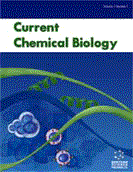Abstract
Background: Gene expression signatures provide a promising diagnostic tool for many diseases, including cancer. However, there remain multiple issues related to the quality of gene expression data, which may impede the analysis and interpretation of differential gene expression in cancer.
Objective: We aimed to address existing issues related to the quality of gene expression data and to devise improved quality control (QC) and expression data processing procedures.
Methods: Linear regression analysis was applied to gene expression datasets generated from diluted and pre-mixed matched breast cancer and normal breast tissue samples. Datapoint outliers were identified and removed, and accurate expression values corresponding to cancer and normal tissues were recalculated.
Results: We achieved a 27% increase in the number of identifiable differentially regulated genes and a similar reduction in the number of false positives identified from microarray DEG data. Our approach reduced technical errors and improved the accuracy and precision of determining the degree of DEG but did not remove biological outliers, such as naturally variably expressed genes. We also determined the linear dynamic range of microarray assay directly from expression data, which allowed accurate quantification of differentially expressed entire pathways.
Conclusion: The improved QC allowed accurate discrimination of genes by the degree of their upregulation, which helped to reveal an intricate and highly tuned network of biological pathways and their regulation in cancer. We were able, for the first time, to quantify the degree of transcriptional upregulation of entire individual biological pathways upregulated in breast cancer. It can be concluded that the vast majority of DEG data that are publicly available today may have been generated using sub-optimal experimental design, lacking preparations required for genuinely accurate and quantitative analysis.
Keywords: Gene expression, microarrays, differential gene expression, biological pathways, breast cancer, quality control.
[http://dx.doi.org/10.1093/jn/128.11.2038] [PMID: 9808663]
[http://dx.doi.org/10.12688/f1000research.21142.1] [PMID: 33552473]
[http://dx.doi.org/10.1371/journal.pone.0030619]
[http://dx.doi.org/10.1093/bioinformatics/bts356] [PMID: 22743226]
[http://dx.doi.org/10.1186/s12859-015-0670-5] [PMID: 26187896]
[http://dx.doi.org/10.1186/s12864-018-4503-6] [PMID: 29444661]
[http://dx.doi.org/10.5808/GI.2015.13.4.119] [PMID: 26865842]
[PMID: 27687708]
[http://dx.doi.org/10.1186/s13059-016-0881-8] [PMID: 26813401]
[http://dx.doi.org/10.1186/s12859-018-2139-9] [PMID: 29649993]
[http://dx.doi.org/10.1186/s12859-020-3433-x] [PMID: 32183729]
[http://dx.doi.org/10.3389/fgene.2019.00614] [PMID: 31316552]
[http://dx.doi.org/10.3390/genes11121487] [PMID: 33322033]
[http://dx.doi.org/10.1186/gb-2007-8-1-r2] [PMID: 17204140]
[http://dx.doi.org/10.1093/bioinformatics/btm412] [PMID: 17720982]
[http://dx.doi.org/10.1093/nar/gkv007] [PMID: 25605792]
[http://dx.doi.org/10.1093/bioinformatics/bti270] [PMID: 15657102]
[http://dx.doi.org/10.1016/j.ygeno.2010.01.003] [PMID: 20079422]
[http://dx.doi.org/10.1214/16-AOAS920] [PMID: 28367255]
[http://dx.doi.org/10.1186/s12920-018-0447-6] [PMID: 30646919]
[http://dx.doi.org/10.1007/978-1-4939-7710-9_2] [PMID: 29508287]
[http://dx.doi.org/10.18632/oncotarget.21127] [PMID: 29156751]
[http://dx.doi.org/10.1016/j.compbiomed.2021.105051] [PMID: 34839186]
[http://dx.doi.org/10.7150/jca.24744] [PMID: 30026820]
[http://dx.doi.org/10.1093/nar/gkaa881] [PMID: 33074331]
[http://dx.doi.org/10.1186/s12859-017-1925-0] [PMID: 29157215]
[http://dx.doi.org/10.1016/j.csbj.2014.11.005] [PMID: 25750696]
[http://dx.doi.org/10.1016/j.artmed.2019.01.006] [PMID: 30797633]
[http://dx.doi.org/10.2202/1544-6115.1426] [PMID: 19222380]
[http://dx.doi.org/10.1186/1471-2105-7-261] [PMID: 16712727]
[http://dx.doi.org/10.1186/s12859-018-2491-9] [PMID: 30626315]
[http://dx.doi.org/10.1093/bioinformatics/btn647] [PMID: 19106121]
[http://dx.doi.org/10.1186/1471-2105-7-306] [PMID: 16780582]
[http://dx.doi.org/10.1186/gb-2014-15-2-r29] [PMID: 24485249]
[http://dx.doi.org/10.1093/nar/gkv412] [PMID: 25925576]
[http://dx.doi.org/10.1186/s12859-020-3399-8] [PMID: 32054449]
[http://dx.doi.org/10.1186/1471-2164-10-493] [PMID: 19852842]
[http://dx.doi.org/10.1261/rna.1754109] [PMID: 19861428]
[http://dx.doi.org/10.1007/s12032-020-01362-0] [PMID: 32219571]
[http://dx.doi.org/10.1155/2021/6329041] [PMID: 34326892]
[http://dx.doi.org/10.17219/acem/118845] [PMID: 32424999]
[http://dx.doi.org/10.1186/1471-2407-6-49] [PMID: 16515701]
[http://dx.doi.org/10.1111/j.1600-0463.2008.00015.x] [PMID: 19161537]
[http://dx.doi.org/10.1023/A:1016166127465] [PMID: 12190113]
[http://dx.doi.org/10.1177/1087057103008003003] [PMID: 12857379]
[http://dx.doi.org/10.1038/msb.2011.28] [PMID: 21654674]
[http://dx.doi.org/10.1073/pnas.1305823110]
[http://dx.doi.org/10.1038/nature13417] [PMID: 25043061]
[http://dx.doi.org/10.1093/nar/gkz1208] [PMID: 31889184]
[http://dx.doi.org/10.1038/msb.2011.81] [PMID: 22068331]
[http://dx.doi.org/10.1126/science.7997877] [PMID: 7997877]
[http://dx.doi.org/10.1073/pnas.94.3.952] [PMID: 9023363]
[http://dx.doi.org/10.1056/NEJMra072367] [PMID: 18234754]
[http://dx.doi.org/10.1002/med.20066] [PMID: 16710861]
[http://dx.doi.org/10.1186/s12885-018-4170-7] [PMID: 29587760]
[http://dx.doi.org/10.1128/JVI.00297-20] [PMID: 32611756]
[http://dx.doi.org/10.3390/cancers13050935] [PMID: 33668097]
[http://dx.doi.org/10.2741/212] [PMID: 21622257]
[http://dx.doi.org/10.1038/s41419-018-0915-0] [PMID: 30158579]
[http://dx.doi.org/10.1016/j.mce.2017.02.002] [PMID: 28163102]
[http://dx.doi.org/10.1016/j.gene.2020.144874] [PMID: 32554047]































